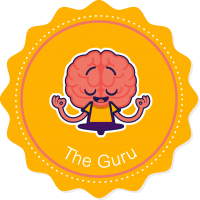Teaching mathematics to elementary students can be both challenging and rewarding. To ensure effective learning, educators are continually exploring innovative strategies tailored to the needs and learning styles of young learners. Here are 10 innovative approaches to teaching math in elementary classrooms:
1. Hands-on Manipulatives: Incorporating manipulatives like blocks, counters, and shapes allows students to visualize and interact with mathematical concepts, making learning more tangible and engaging.
2. Gamified Learning: Introducing math through games and interactive activities not only makes learning fun but also reinforces key concepts in an enjoyable and memorable way.
3. Real-World Applications: Connecting math to real-life situations helps students understand the relevance and practicality of mathematical concepts, fostering a deeper understanding of how math applies to their everyday lives.
4. Differentiated Instruction: Recognizing and catering to diverse learning needs within the classroom ensures that all students have the opportunity to succeed in math by providing personalized instruction and support.
5. Visual Representation: Utilizing visual aids such as diagrams, charts, and graphs helps reinforce mathematical concepts and enhances comprehension, particularly for visual learners.
6. Inquiry-Based Learning: Encouraging curiosity and critical thinking through open-ended questions and problem-solving tasks empowers students to explore mathematical concepts independently and develop their problem-solving skills.
7. Peer Collaboration: Encouraging collaboration and peer learning allows students to learn from one another, share strategies, and develop a deeper understanding of mathematical concepts through discussion and teamwork.
8. Technology Integration: Leveraging technology tools and resources, such as educational apps, interactive whiteboards, and online simulations, provides students with additional opportunities for hands-on learning and exploration.
9. Project-Based Learning: Engaging students in long-term, real-world projects that require them to apply mathematical concepts to solve authentic problems promotes deeper learning and encourages creativity and critical thinking.
10. Student- Centered Instruction: Empowering students to take ownership of their learning by allowing them to explore mathematical concepts at their own pace and in ways that align with their interests and strengths fosters a sense of autonomy and motivation in math education.
By incorporating these innovative strategies into their teaching practices, educators can create dynamic and enriching math learning experiences that inspire curiosity, promote deep understanding, and equip students with essential mathematical skills for success.









